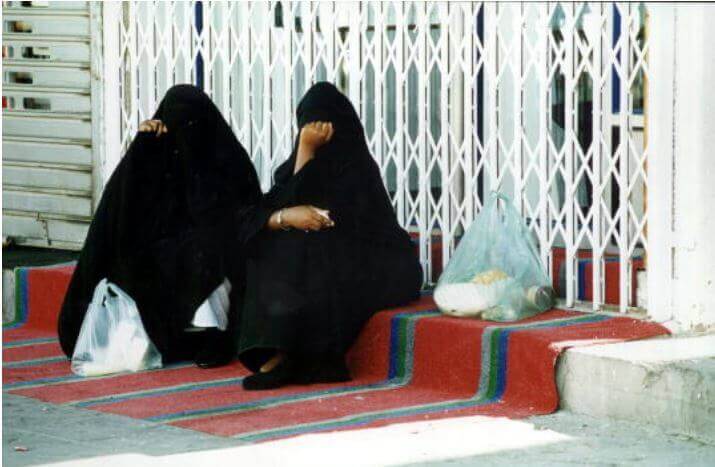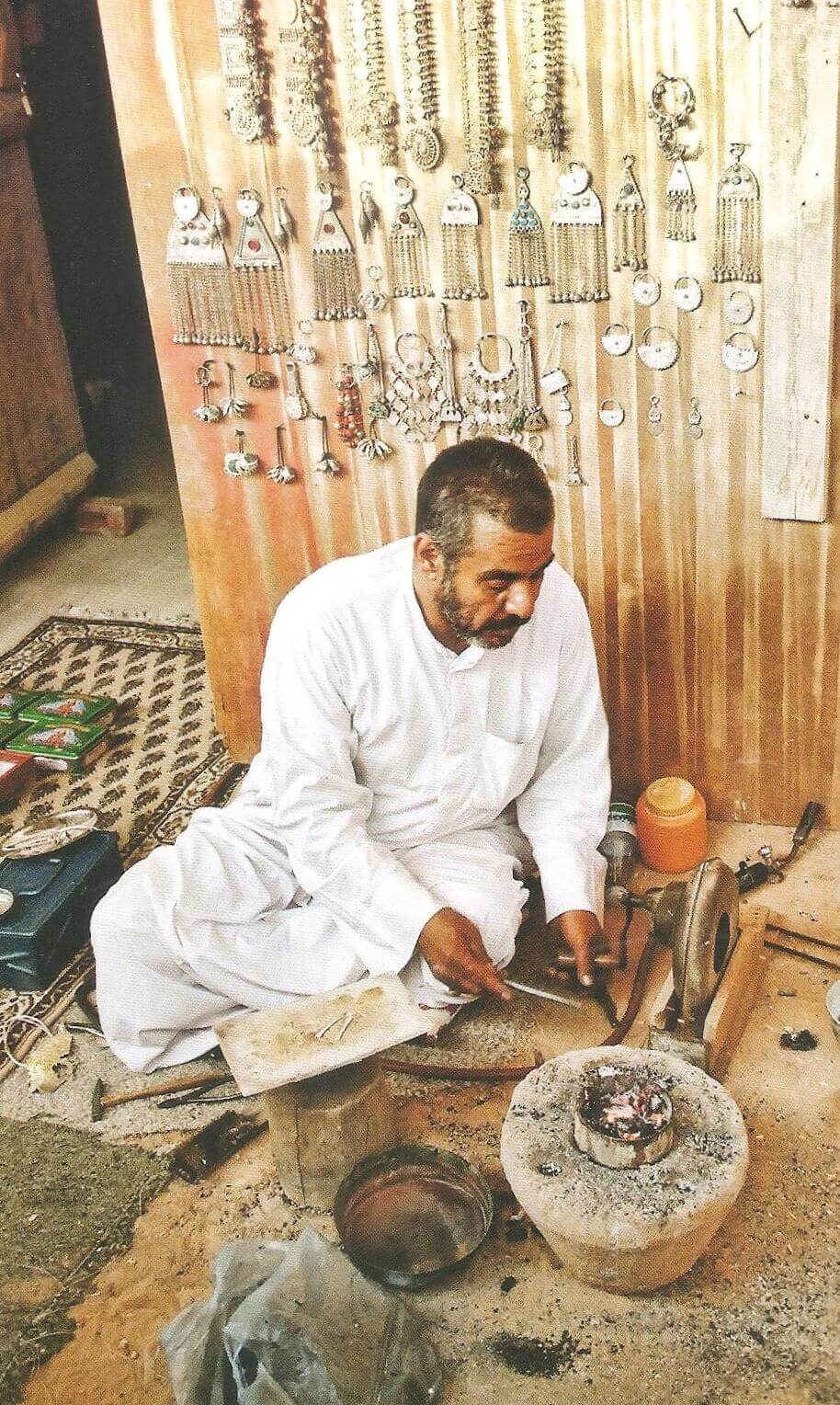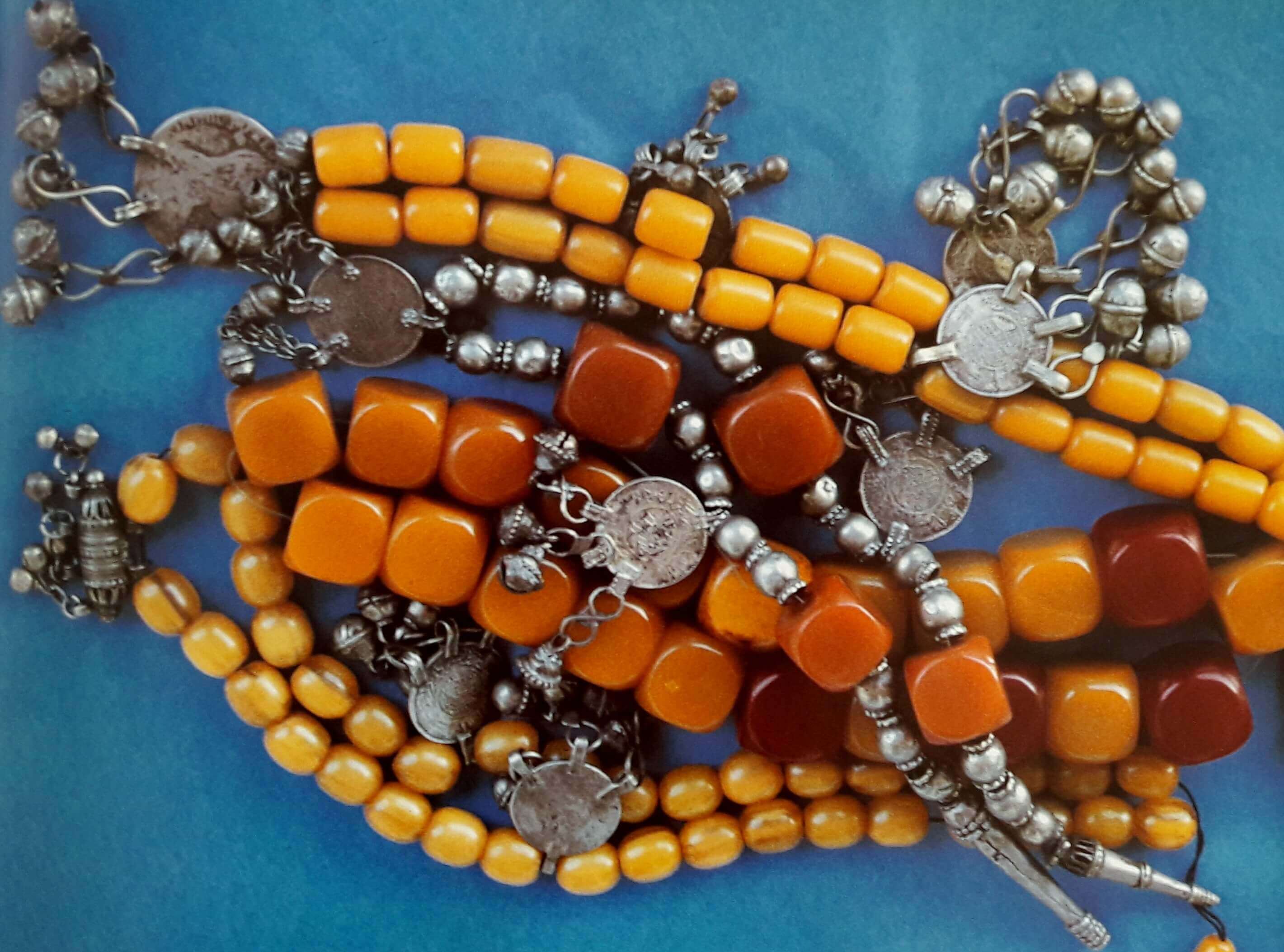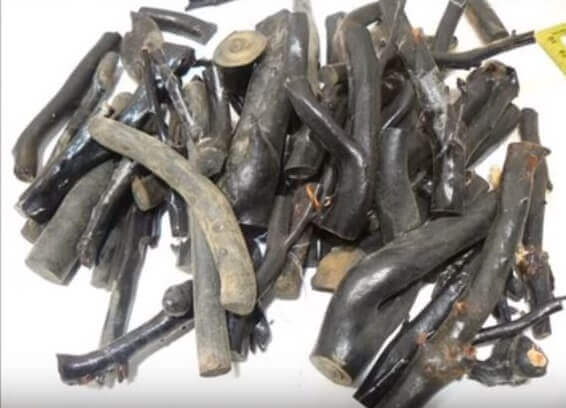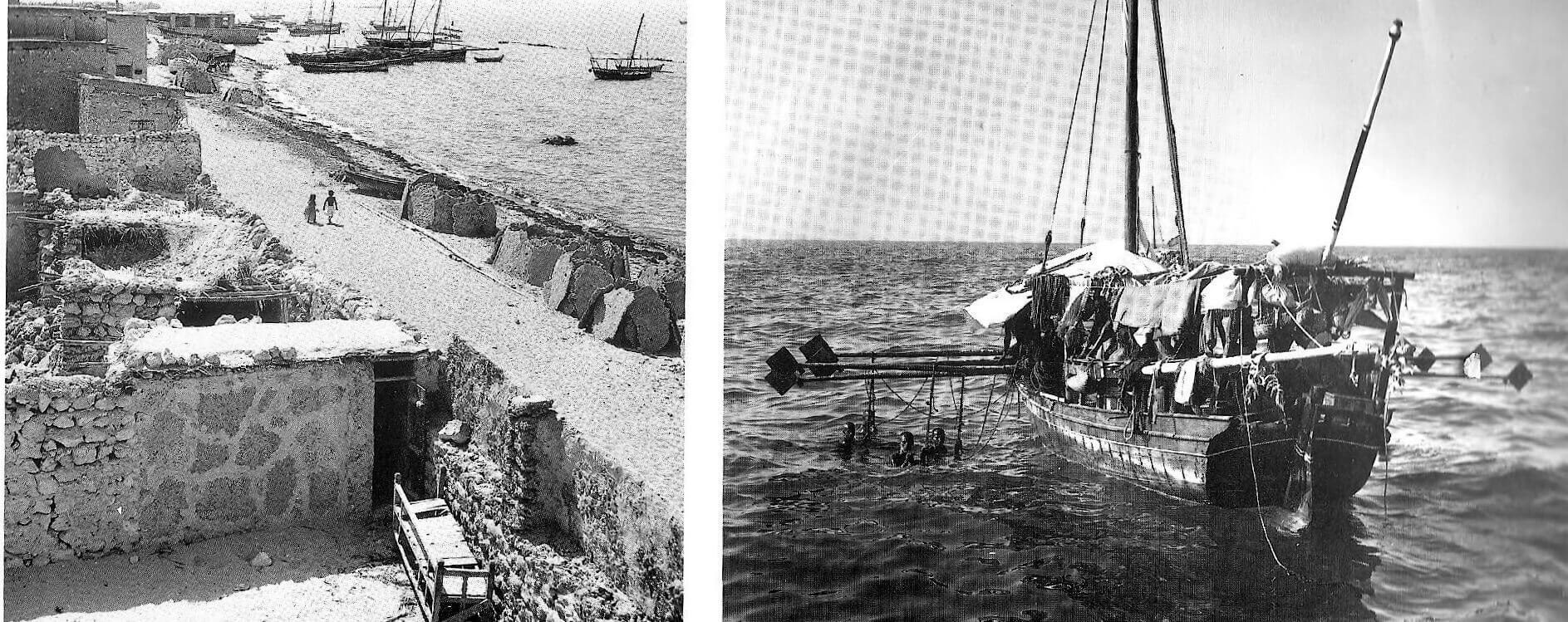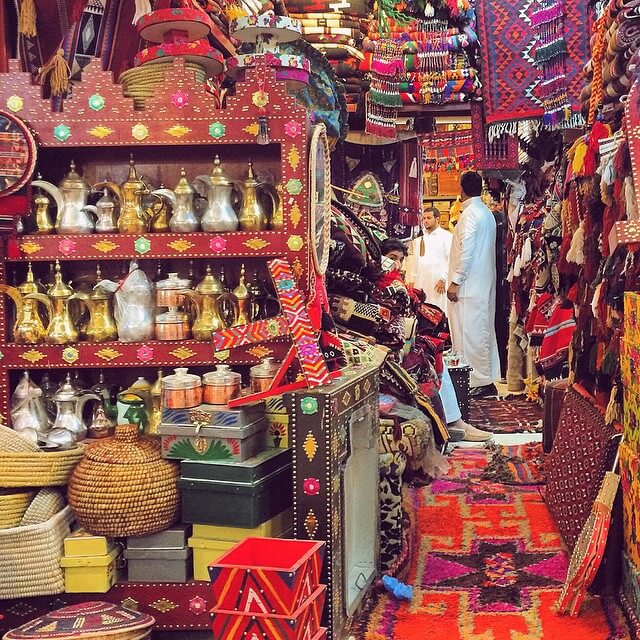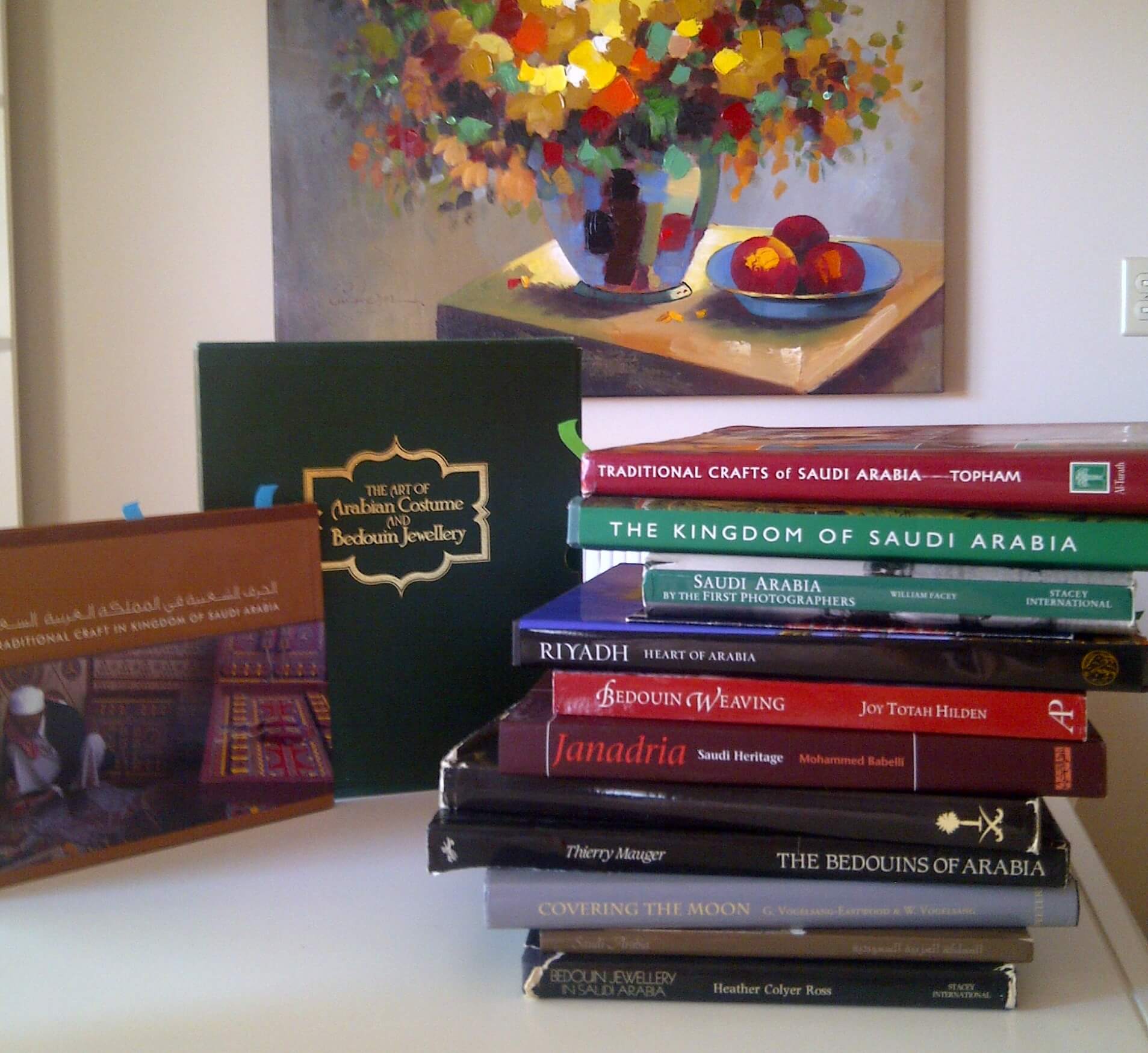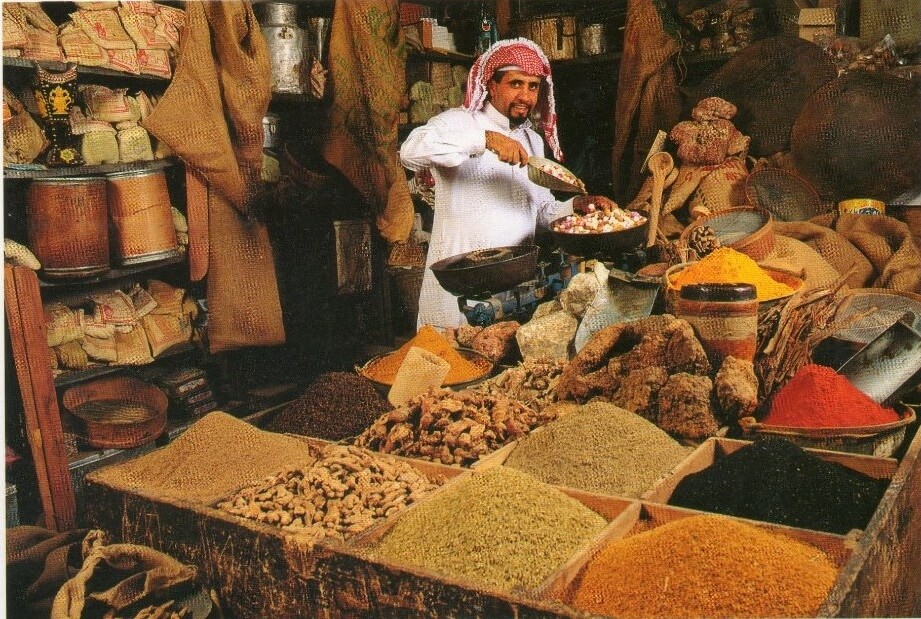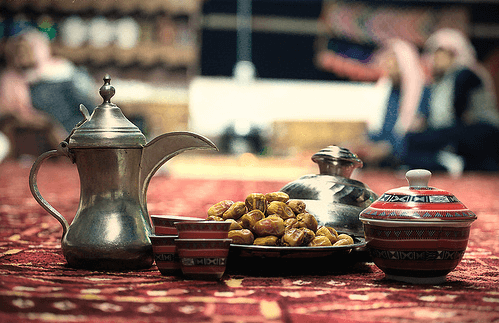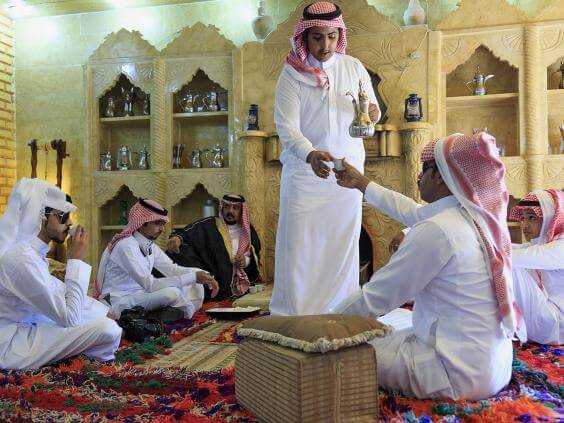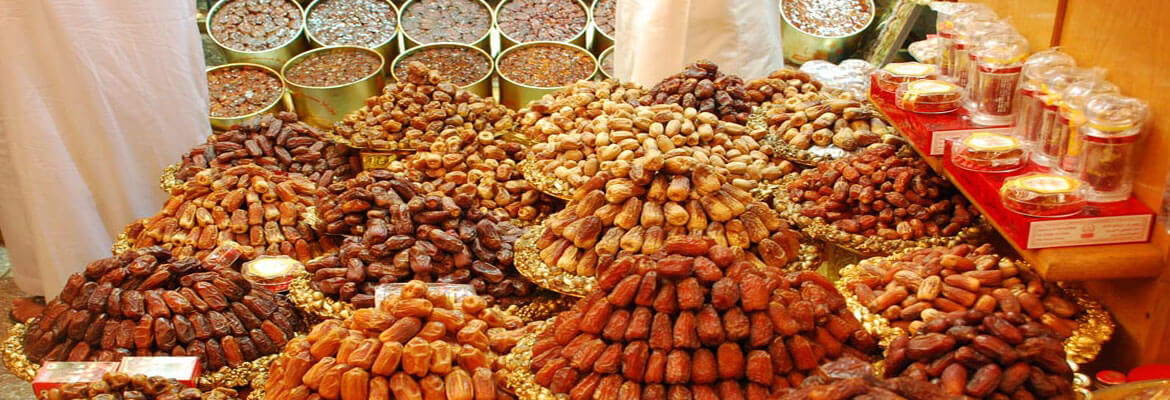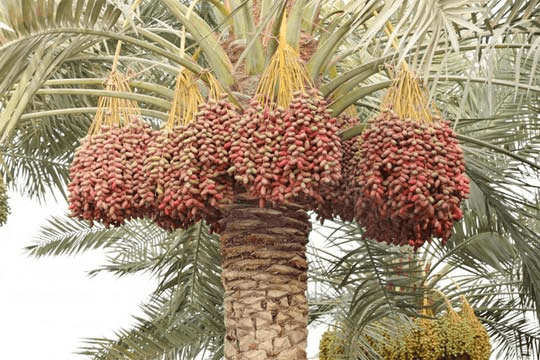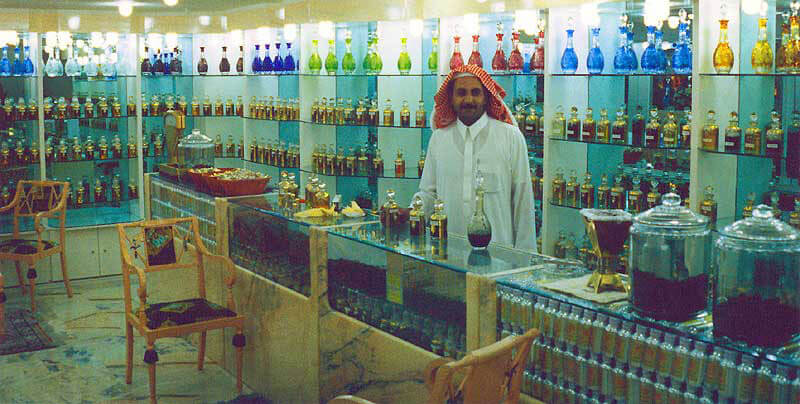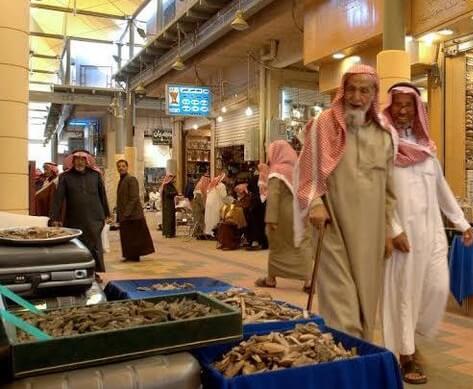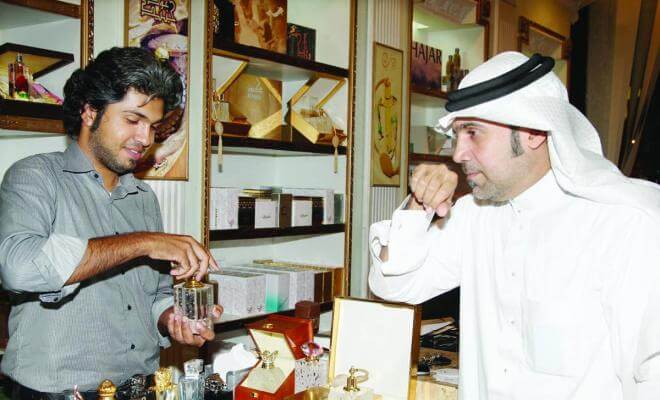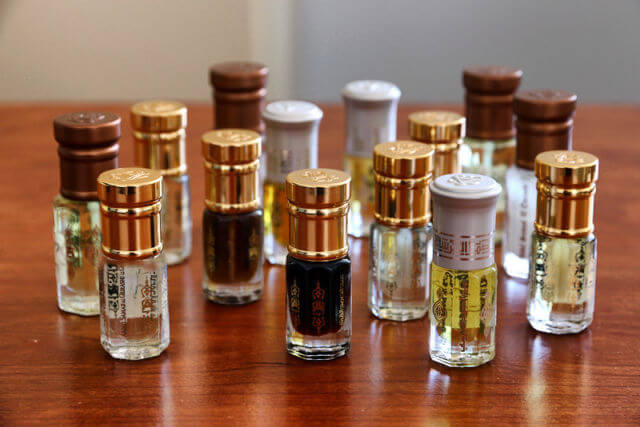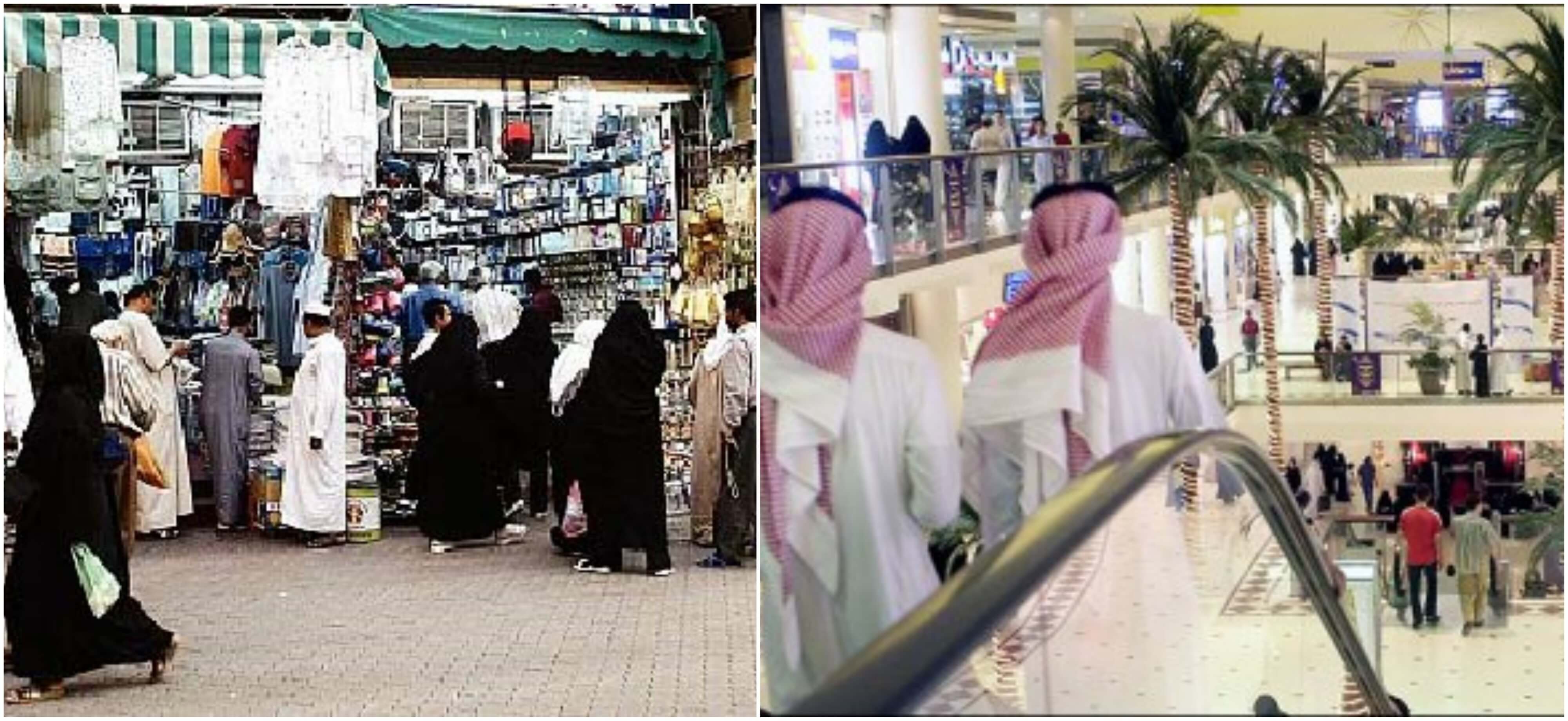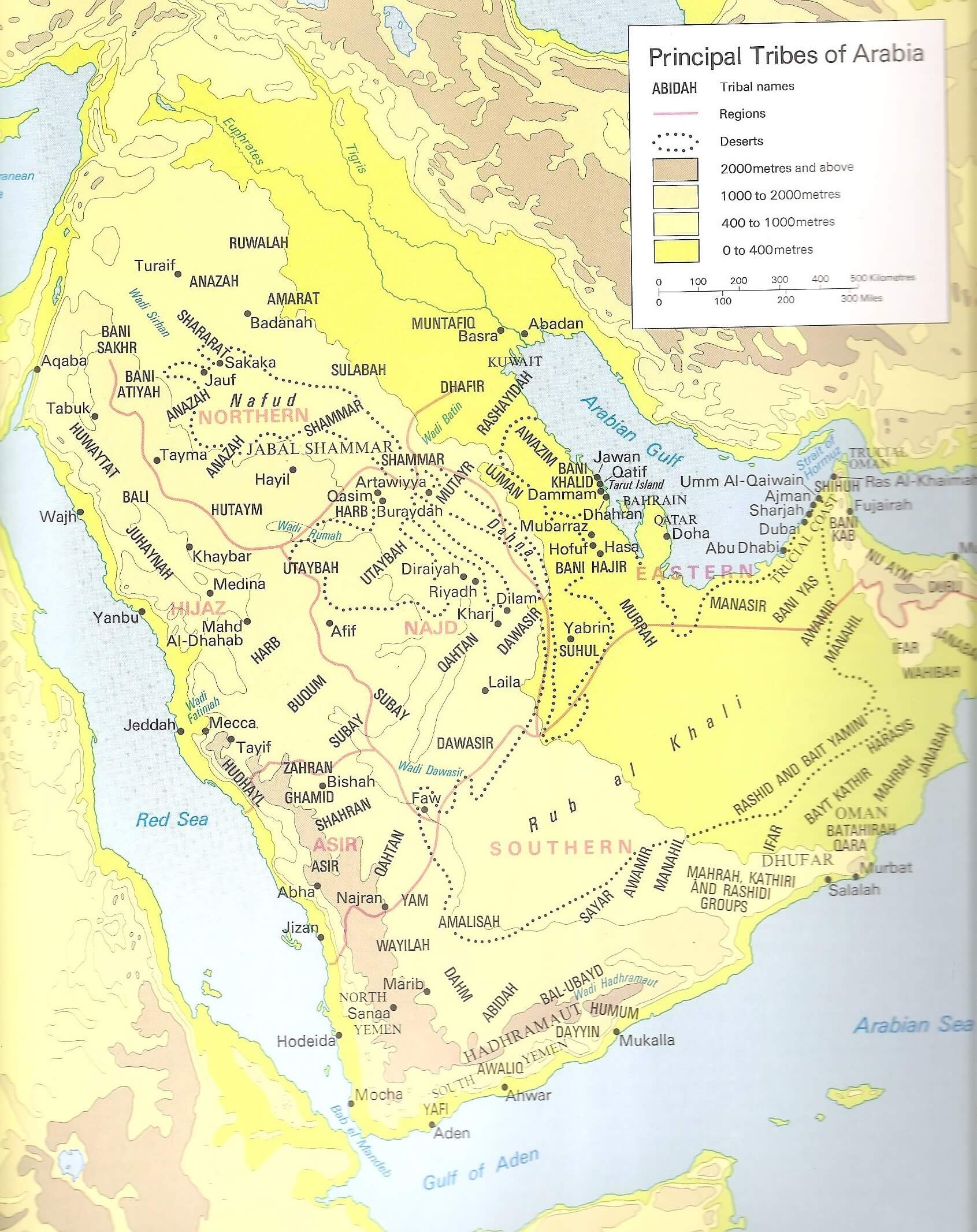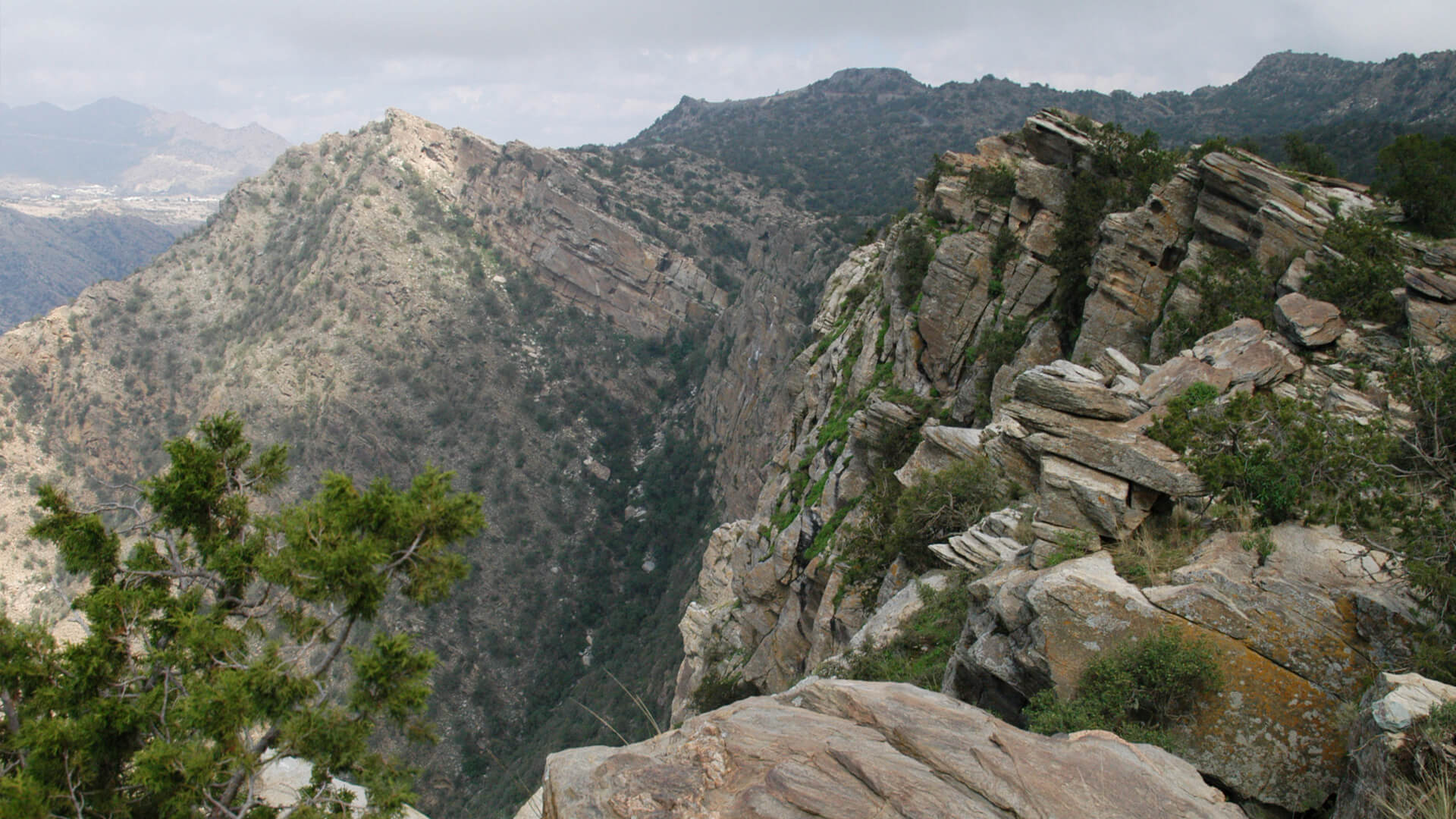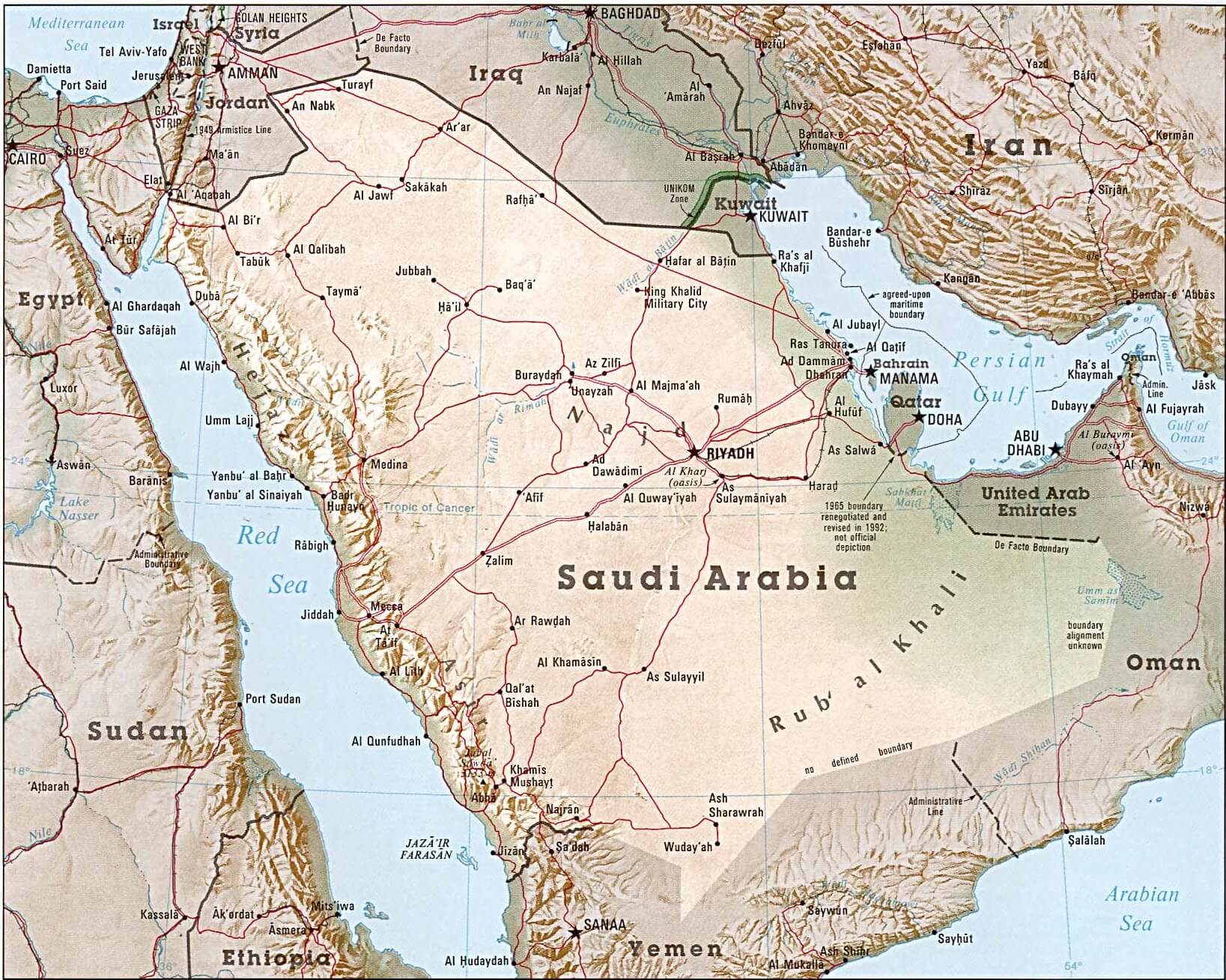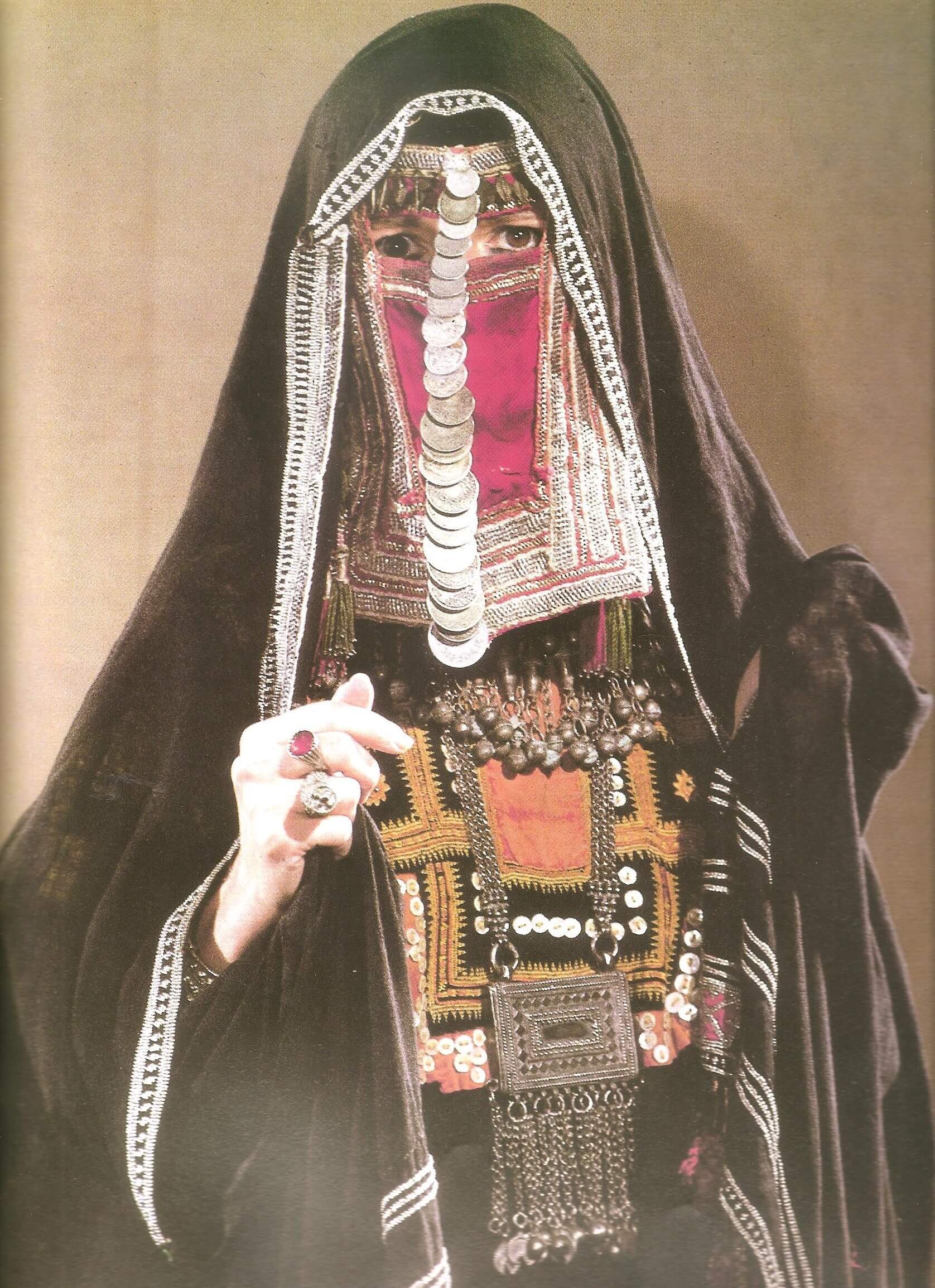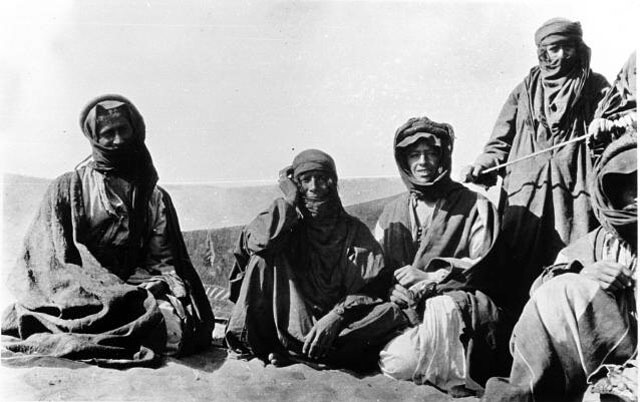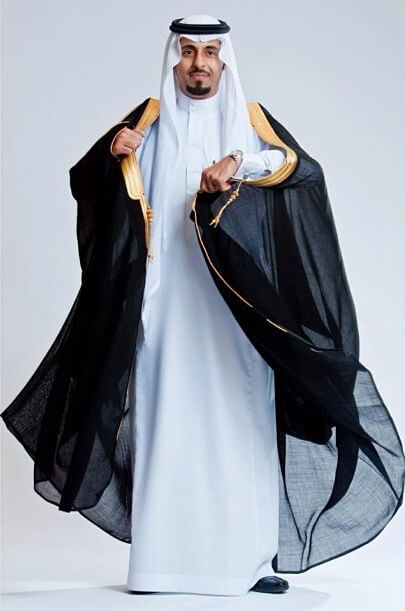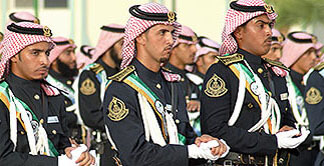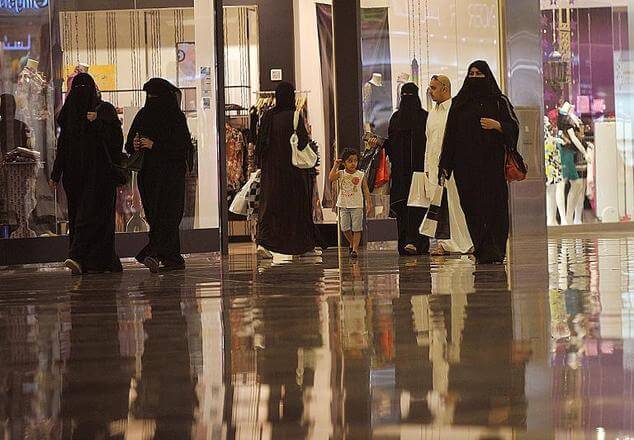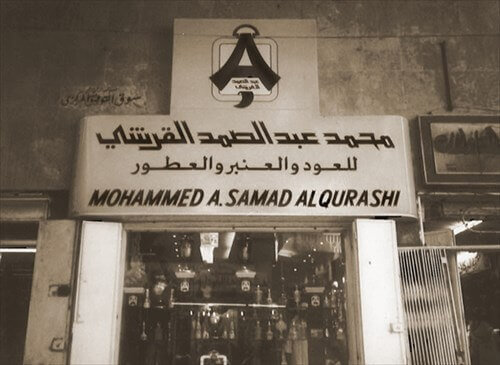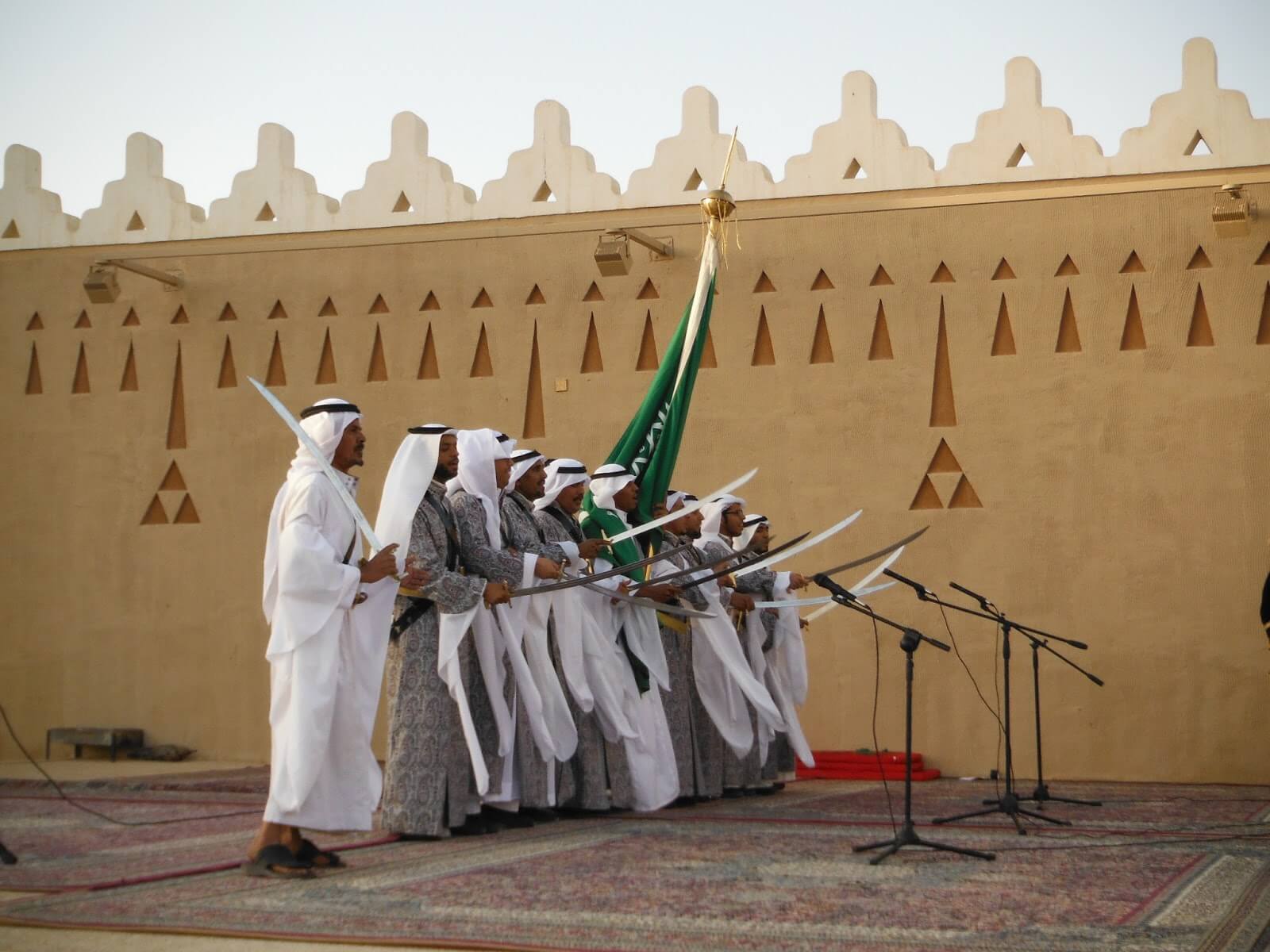What Souvenirs to Bring from Saudi Arabia – Part Fourteen of the Top 15 Ideas for Gift Shopping.
Personal weapon items of Saudi Arabia – daggers.
From the little and confusing information I’ve been able to find, there are two types of Saudi Arabian daggers: Al-Janbiyah and Al-Khanjar, which are curved and straight types (this is classification described in the book The Traditional Craft in Kingdom of Saudi Arabia). Both are traditionally manufactured mostly in the southern region of the Kingdom.
Marie-Christine Heinze, German researcher who writes an extensive work on janbiyah, suggests that the expression janbiyah for dagger (in all shapes and sizes) is most common in the Western parts of Arabia, whereas khanjar is the word used in Eastern Arabia.
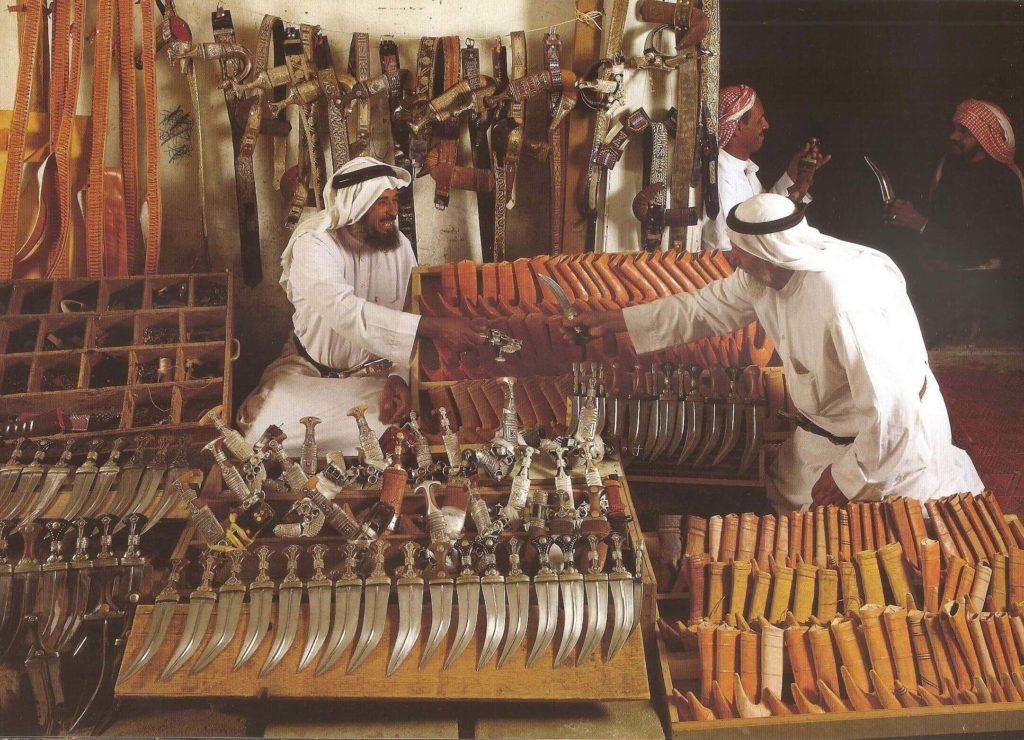
Workshop and storefront with traditional Saudi daggers.
Image source The Traditional Craft in Kingdom of Saudi Arabia book
The traditional janbiyah is a short broad double-sided curved blade of iron, with a hilt made of silver, polished wood, bone, sandalwood, water buffalo, horn of ibex or rhino (among the most expensive antique ones, since hunting for rhinoceros is nowadays prohibited), decorated with embellishments or semiprecious stones. It sits in a sheath which is also handmade of wood and heavily decorated with leather and silver. It’s easy to tell of social status of a man judging by the janbiyah he is wearing.
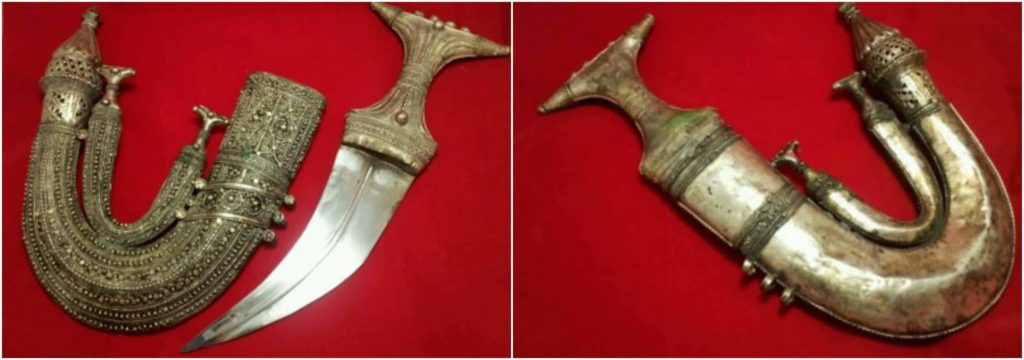
Saudi silver janbiyah
Image source: online internet auction website
Today, the janbiyah is the main accessory to the clothing worn by traditionally garbed Arab men. It is well taken care of, and unlike jewelry, passed on to the next generation.
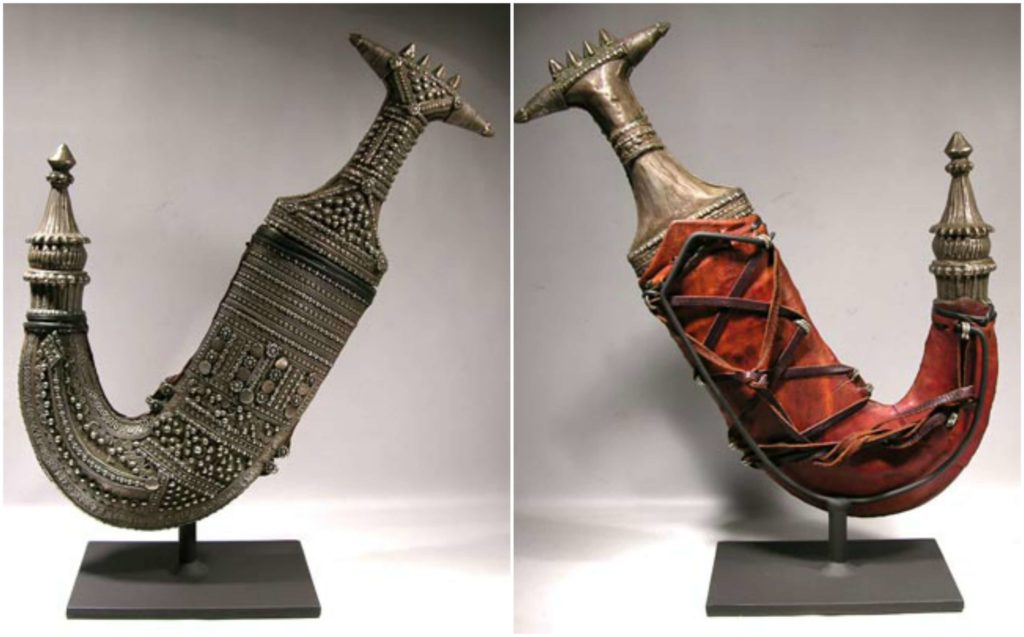
Saudi silver janbiyah
Janbiyah is worn on a belt vertically in front, across the abdomen. Although from what I understand, the word janbiyah comes from the Arabic word “hip”, it is not worn on the side (or on the hip), but rather in front. The back side of the sheath is usually covered with leather or fabric, as wearing the dagger against crisp white traditional Arabian thobe will leave silver oxide marks. The dagger in the traditional Arabian outfit sits in a leather or fabric belt which is about 6cm wide. The belt is also decorated with silver, embroidered with silver thread or wire. Some belts have various accessories attached: a pouch for gunpowder or a container for kohl.
The hilt (although sometimes the blade also) is the most expensive part of the dagger, so it often gets refurbished. Generally, janbiyah is constructed in such a way that everything can be interchangeable and replaceable: scabbard, hilt and blade may come from different sources and assembled. In the stores of Saudi souks you are most likely to find these mismatched versions, as sellers might make these assemblies (replacing a plain original scabbard for example) so it looks more attractive to an uneducated eye of a tourist.
Due to the limited lifespan of the different dagger parts, intact janbiyah older than 200 years are very rare.
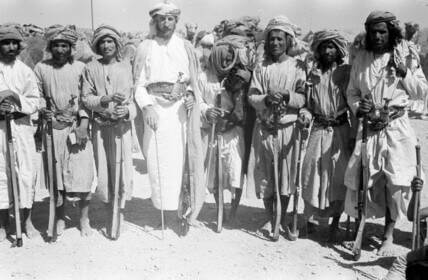
British explorer Wilfred Thesiger and his bedouin accomplices, wearing janbiyah.
Image source: Crossing the Sands book by Wilfred Thesiger
What you can be sure about is that the modern daggers are made using the same tools and the same technique as they were made ages ago. The conservative mentality dictates that if once tried, tested and proved working, repeat the same way.
Although janbiyah is classified as defensive weapon (the central ridge in the blade lends itself to a downward strike in short-range fighting), it was also used for skinning and cutting meat. Nowadays it makes part of the traditional Arabian men dress worn to official happenings or weddings, the traditional Saudi Ardah sword dance is also performed wearing the belt with janbiyah. No longer used for personal defense, janbiyah is still carried for cultural and ceremonial reasons.
You will notice that there are a few types of janbiyah (the most obvious distinctions are the angle at which the blade is curved at the tip, or the configuration of the hilt which might be large T-shaped or smaller diamond-shaped). The styles were historically influenced by the neighboring territories like present-day Yemen or Oman, therefore I personally find it difficult to classify styles of Saudi daggers.
Bedouins would test the quality of the blade by knocking the blade with a fingernail (it has to produce the right sound). They would also take the tip of the janbiyah by two fingers and a thumb and slowly lift it vertically. The right janbiyah would fall out of the fingers, whereas a light easy-to-lift one would be considered of bad quality. I can’t say if it has to do with the proper balance or weight.
Saudi khanjar.
Khanjar means dagger in Arabic. It is accepted to consider that nomadic tribes traditionally needed longer blade type for protection against leopards and wolves that inhabited the area long time ago, this is how the longer-blade modification of khanjar was designed.
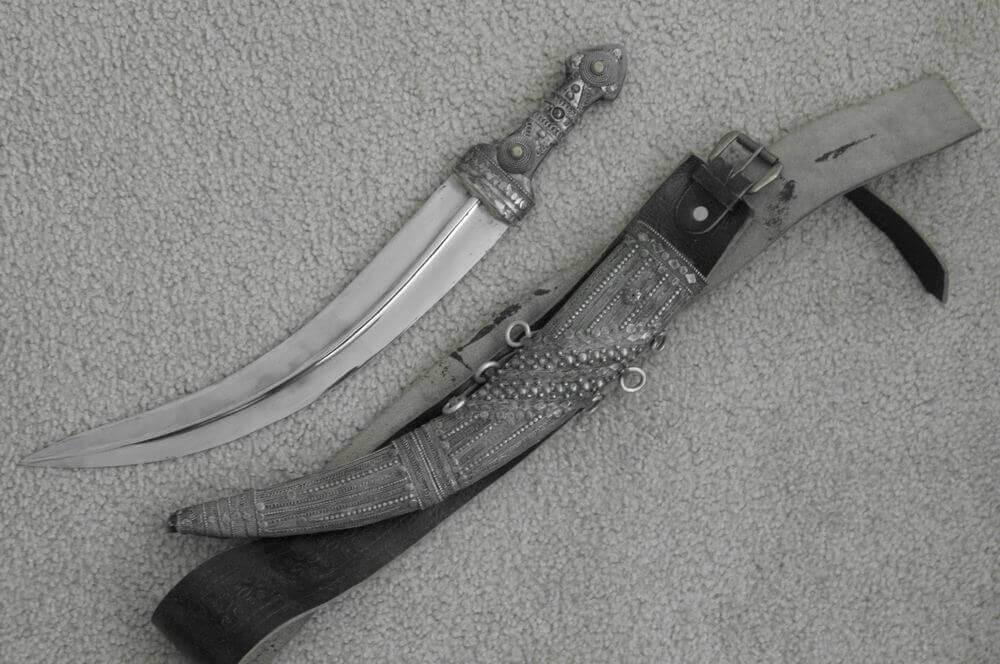
Saudi khanjar
Khanjar sits horizontally at the waist in front of the body.
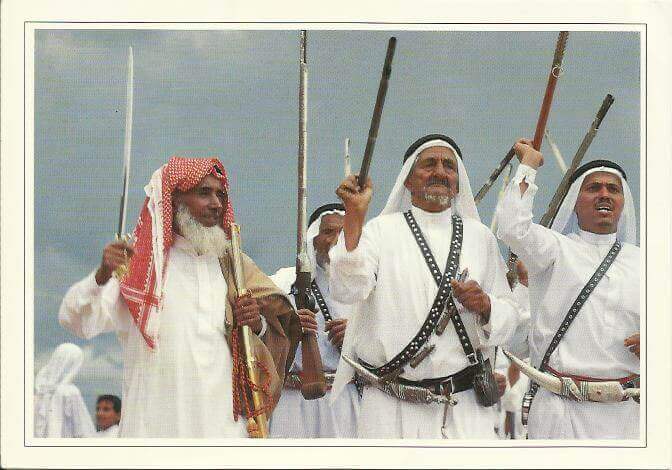
Arab men wearing longer-bladed daggers at their waists.
Image source: postcard from Saudi Arabia
A few points to add on defining quality of daggers:
- Since silver oxidizes and acquires patina quick (5-6 years of exposed storing can add a nice layer of patina to silver parts), daggers might look much older than they really are.
- As mentioned before, τhe art of silver nail inlaying is also used to decorate traditional daggers, silversmiths used the technique of silver nail inlaying to decorate the hilts. Some hilts would sit very dense to each other, and there is only one natural material that allows such dense nailing without chipping: rhino horn. A dagger with a rhino hilt inlayed with silver nails would be an expensive purchase.
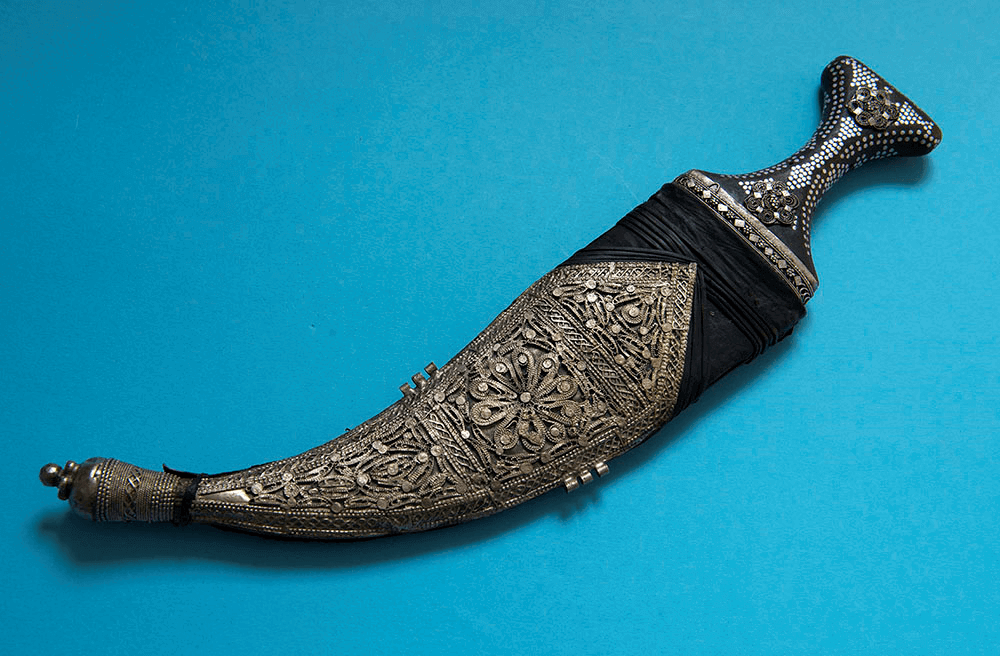
Dagger with hilt decorated with silver nail inlays.
Image source http://www.vikingsword.com
Saudi Arabian saif.
There is one more type of Saudi “steel arms”. It goes by the name of saif (which means sword in Arabic and is used to describe an Arabic sabre). This single-edged single handed sword may commonly be seen as part of the Saudi Arabian National Guard uniform.
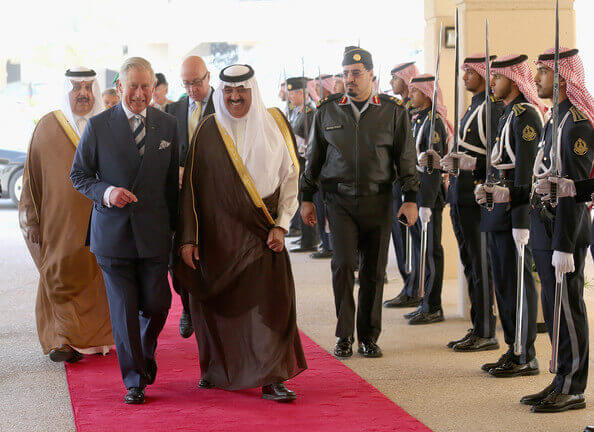
Prince Charles on his official trip to Saudi Arabia, visits the headquarters of the Saudi Arabian National Guard.
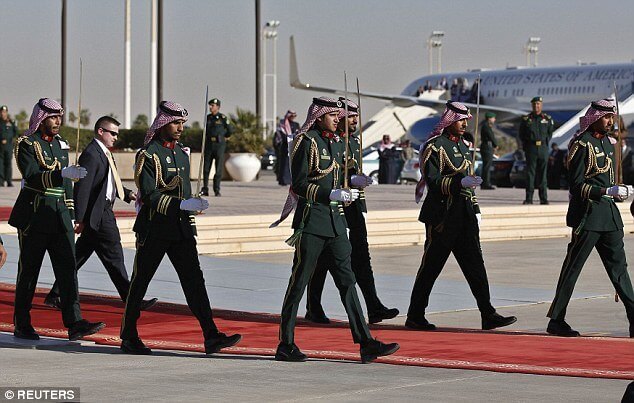
Saudi Honorary Guard during Obama visit of Saudi Arabia
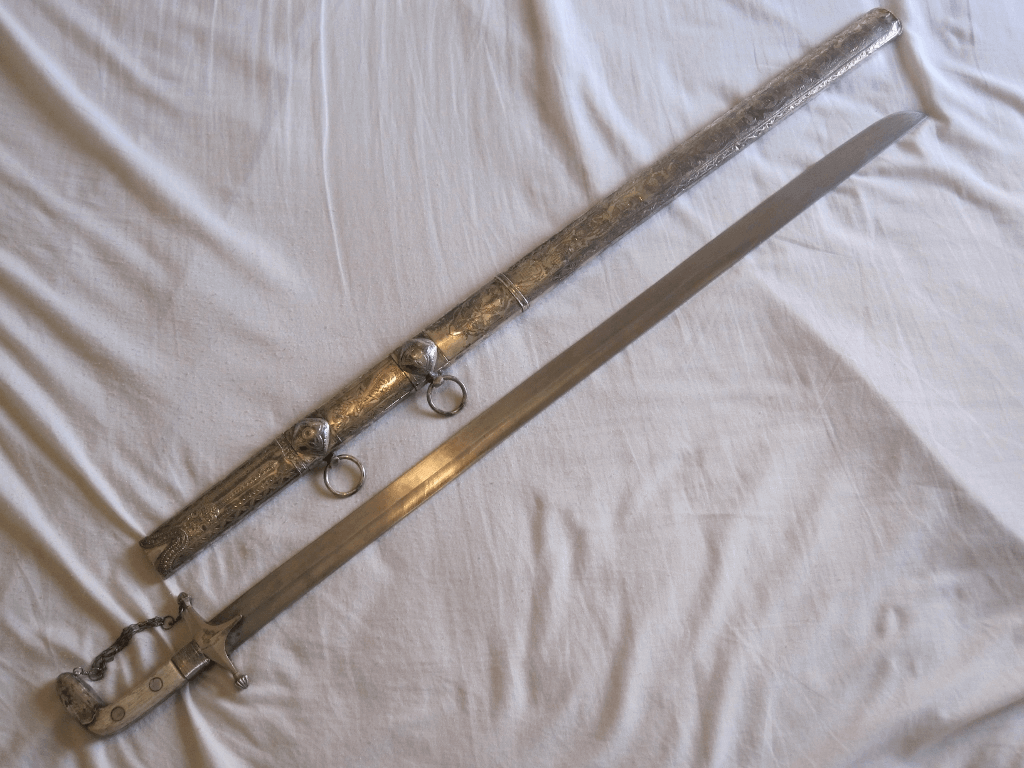
Saudi straight saif
Beautifully decorated saif with rubies and gold
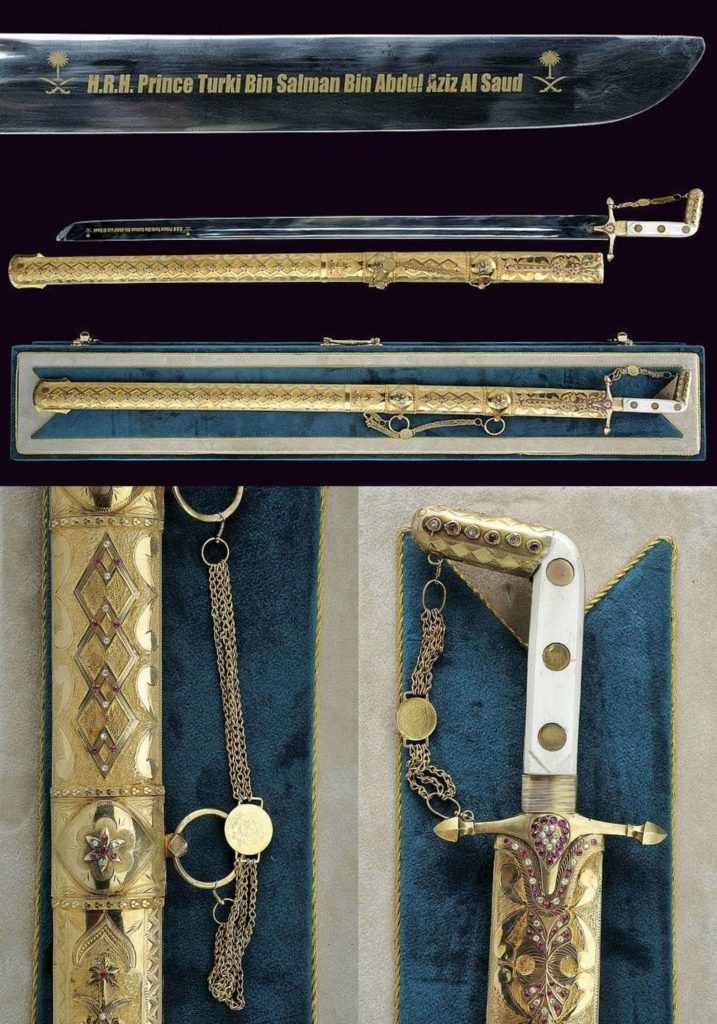
Saudi saif sold at one of online auctions
There are variants with blades that curve to a greater or lesser degree. Two curved saifs are portrayed on the Emblem of Saudi Arabia.

Curved Saudi saif
Saif is depicted on the flag of the Kingdom

Saudi girls who climbed the mount of Everest hold their National Flag.

Saudi Arabian saif decorated with silver filigree
The website where it was sold describes it as a presentation sabre circa 1980.
Gold was used for the most exquisite Saudi Arabian daggers and swords.
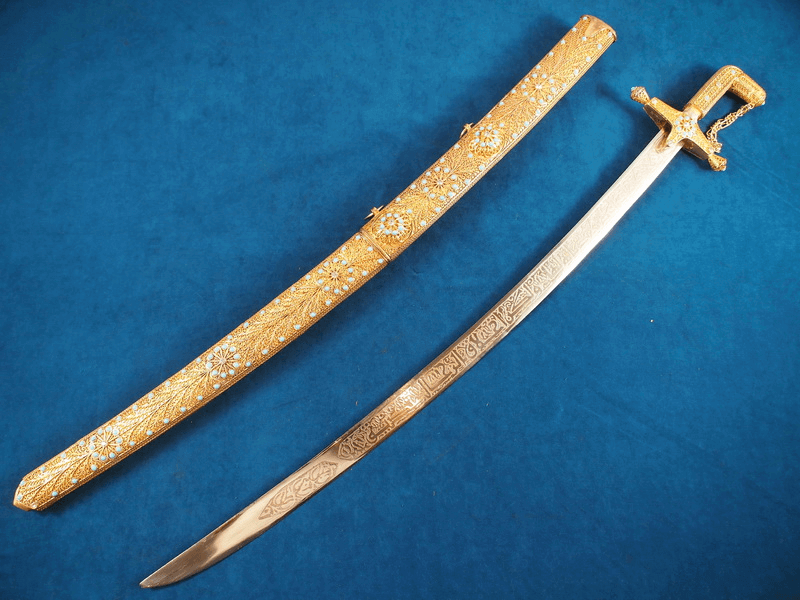
Gold plated Saudi saif incrusted by turquoise and crystals.
As described in the website where it was sold, this example is of middle 20th century, and belonged to an expat who was employed with oil-producing company in Saudi Arabia. Most probably he was given this sword as a sign of appreciation for his work.
This kind of exclusive sabres are given out to visiting honored guests, high-rank politicians, and dignitaries (like presidents of states) by the Saudi Royal Family.
One more sample of exclusive janbiyah circa 1950, with the emblem of Saudi Arabia engraved on the top of the scabbard.
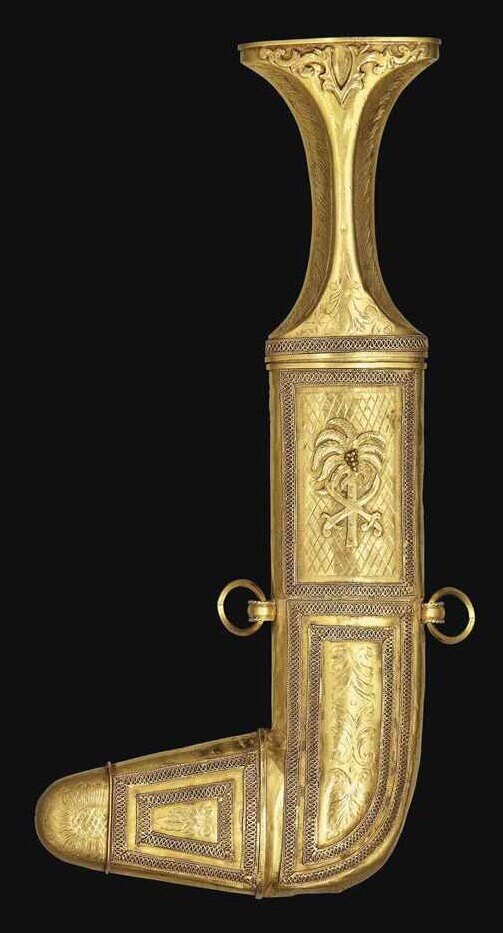
A presentation gold-cased Saudi janbiyah
Whereas there is no comprehensive printed or online sources specializing in Saudi Arabian traditional daggers (yet, hopefully), I found a handful of online resources that might be useful for understanding influence of neighboring countries on traditional Saudi daggers making.
Website on Omani khanjars
Forum with a section on Islamic and Middle Eastern weapons, with a few knowledgeable participants
Website by a German researcher who wrote her PHD on Yemeni janbiyah

